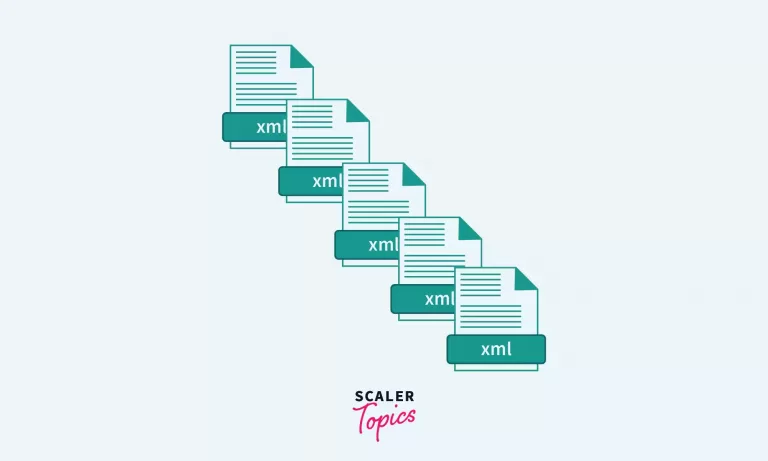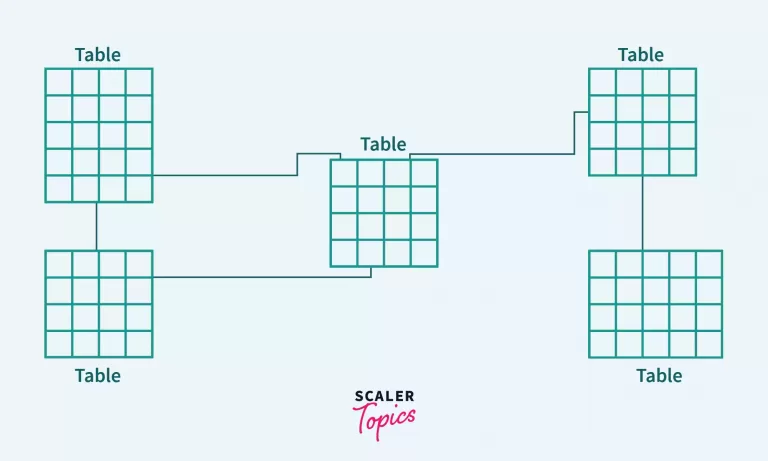Difference Between DBMS and RDBMS

A Database Management System (DBMS) is a software application that facilitates the creation, management, and manipulation of databases. It provides an interface for users and other software applications to interact with the database, allowing for efficient storage, retrieval, and modification of data.
DBMS and RDBMS are both database management systems, but they differ in their approach and functionality. DBMS encompasses various database types, while RDBMS organizes data into tables with structured schemas, supporting SQL for data manipulation. Understanding these differences is crucial for choosing the right system for specific data management needs.
What is DBMS?
DBMS or Database Management System is a software that enables data storage and manipulation, such as insert, erase, and modify. It is a system software that helps create and manage a database based on user instructions. The DBMS stores data in files and provides an interface between data and software applications. However, it has lower hardware and software requirements, doesn't support client-server architecture, and data can be redundant since it is not relational. Furthermore, it stores data locally and does not allow multiple users to access it simultaneously.
 DBMS can be applied when data is in a navigational or hierarchical form. Until this point, DBMS is used in Windows Registry (i.e. a hierarchical database that contains data for the operation of the Windows operating system), file systems, etc.
DBMS can be applied when data is in a navigational or hierarchical form. Until this point, DBMS is used in Windows Registry (i.e. a hierarchical database that contains data for the operation of the Windows operating system), file systems, etc.
What is RDBMS?
RDBMS is an advanced version of DBMS that stores data in tables and has relational functionality. Data is stored in rows and columns, with rows being tuples/records and columns being attributes with specific data types. Tables can hold large amounts of data.
The given table stores the name and age of people characterized with a unique Id. Here, the column Name stores varchar values, and the column Age stores integer values.
| Id | Name | Age |
|---|---|---|
| 1 | Ramesh Dey | 18 |
| 2 | Pooja Sinha | 32 |
| 3 | Priya Kumar | 46 |
Multiple users are allowed to access the data and are able to retrieve multiple entries with a single SQL(Structured Query Language) query. SQL lets you retrieve and manipulate data records stored in the database. The SQL syntax depends on which RDBMS you are using. As the data is relational, data redundancy problems do not arise. Although it requires more resources, it upholds client-server architecture, which proves to be a tremendous help.
RDBMS systems include Oracle, SQL Server, MySQL, etc.
The database structure is as shown in the below diagram. Each table consists of several data records. The tables are interconnected based on the relationship between data stored in them. As evident, the database is very organized.
 At this point, we have a brief idea about what DBMS and RDBMS are. Now, let us examine how DBMS and RDBMS differ from each other.
At this point, we have a brief idea about what DBMS and RDBMS are. Now, let us examine how DBMS and RDBMS differ from each other.
Key Difference Between DBMS and RDBMS
The main difference between Database Management Systems (DBMS) and Relational Database Management Systems (RDBMS) lies in how they handle data. DBMS stores data in a structured manner but lacks the ability to establish relationships between data elements. In contrast, RDBMS organizes data into tables with predefined schemas and enforces relationships between these tables, offering more robust data integrity and facilitating complex queries. This relational approach makes RDBMS the preferred choice for applications demanding precise data management, while DBMS is suitable for simpler data storage needs.
Difference Between DBMS and RDBMS
| Parameter | DBMS (Database Management System) | RDBMS (Relational Database Management System) |
|---|---|---|
| Database Structure | Data is stored as files in a hierarchical structure. | Data is stored in tables, with columns as attributes and rows containing data. |
| Integrity Constraints | Integrity constraints cannot be applied at the file level. | RDBMS enforces constraints on data types and values, ensuring data consistency. |
| No. of users | Supports one user at a time. | Allows multiple users to access data simultaneously. |
| Client-Server Architecture | Does not support client-server architecture. | Supports client-server architecture. |
| Distributed Database | Does not support distributed databases. | ISupports distributed databases for optimized computing. |
| Normalization | Cannot be applied due to unrelated data records. | Removes redundancy and normalizes data due to related tables. |
| Data Accessibility | Accesses a single entry or file at a time. | A single SQL query can access multiple data records. |
| Data Fetching Time | Slower due to complex data structure. | Faster, thanks to tabular organization and single SQL queries. |
| Data Capacity | Suitable for small data quantities and single users. | Manages large amounts of data for multiple users. |
| Resource Requirement | Requires fewer hardware and software resources. | Demands more resources compared to DBMS. |
| Examples | Windows Registry, Microsoft Access, etc. | SQL Server, MySQL, Oracle, PostgreSQL, etc. |
| Query Language | Uses a proprietary query language specific to the DBMS. | Utilizes standardized SQL (Structured Query Language) for querying. |
| Data Relationships | Does not efficiently handle complex relationships between data. | Easily manages complex data relationships through table joins and keys. |
| Data Storage | Stores data as files on the file system. | Organizes data efficiently in tables with defined schemas. |
| Data Consistency | May not guarantee data consistency and referential integrity. | Enforces ACID properties (Atomicity, Consistency, Integrity, and Durability) to ensure data consistency. |
Conclusion
- Fundamental Difference: DBMS manages data storage without enforcing relationships, while RDBMS organizes data into tables with structured schemas, enabling relational functionality.
- Data Integrity: RDBMS ensures data integrity through enforced constraints on data types and values, while DBMS lacks such constraints.
- Concurrency: RDBMS allows multiple users to access data simultaneously, while DBMS supports only one user at a time.
- Query Efficiency: RDBMS enables faster data retrieval with single SQL queries due to its tabular organization, whereas DBMS may have slower data fetching times.
- Resource Requirements: DBMS demands fewer hardware and software resources compared to RDBMS, which requires more resources for its relational capabilities and data integrity features.
